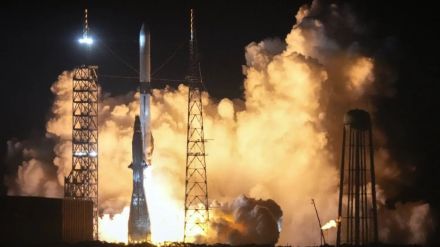Blue Origin’s massive New Glenn rocket successfully lifted off from Florida early Thursday morning, marking its debut mission to space. This launch represents a key milestone for Jeff Bezos’ space company as it seeks to compete with SpaceX in the satellite launch market. Blue Origin also tried to land the rocket’s booster on a barge in the Atlantic Ocean, but it was lost during reentry through the atmosphere.
Standing 30 stories tall, the reusable rocket’s first stage, powered by liquid oxygen and methane, blasted off from Blue Origin’s launchpad at Cape Canaveral Space Force Station at around 2 a.m. ET (0700 GMT) under overcast skies. This was the second launch attempt this week, after the initial one on Monday was scrubbed due to ice accumulation on a propellant line. On Thursday, there were no issues reported before launch.
Hundreds of employees from Blue Origin’s headquarters in Kent, Washington, and its Florida rocket factory watched the historic launch via a company livestream. Locals along Florida’s east coast cheered from parks and campsites miles away from the launchpad as the rocket soared into the sky.
The mission marks the culmination of over a decade and billions of dollars in development. It includes an attempt to land New Glenn’s first-stage booster on a sea-going barge in the Atlantic Ocean 10 minutes after liftoff, while the second stage continues its journey toward orbit.
Inside the payload bay is the first prototype of Blue Origin’s Blue Ring vehicle, a maneuverable spacecraft designed for national security and satellite servicing missions. The company plans to sell the vehicle to the Pentagon and commercial customers.
Achieving a successful orbital insertion on its inaugural flight would be a rare and significant accomplishment for any space company.
